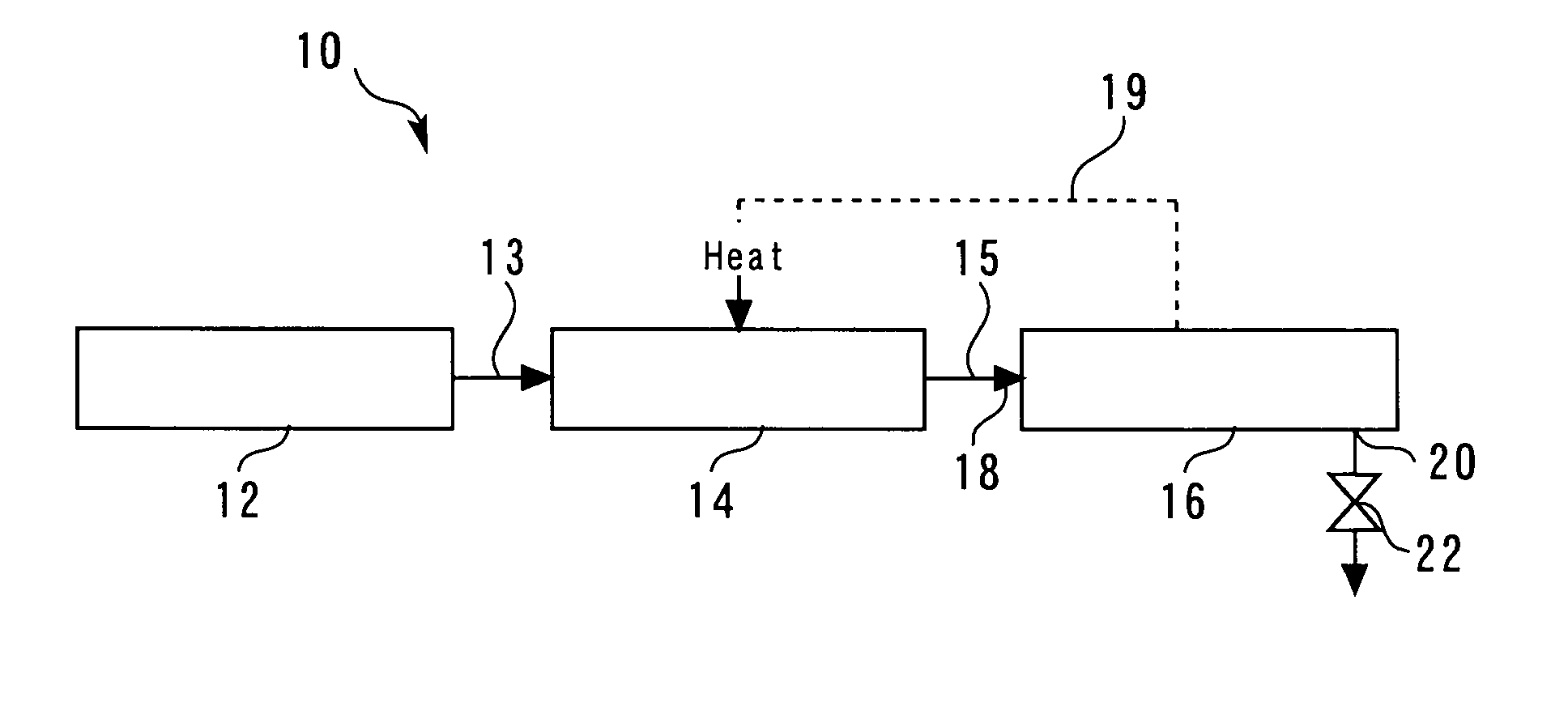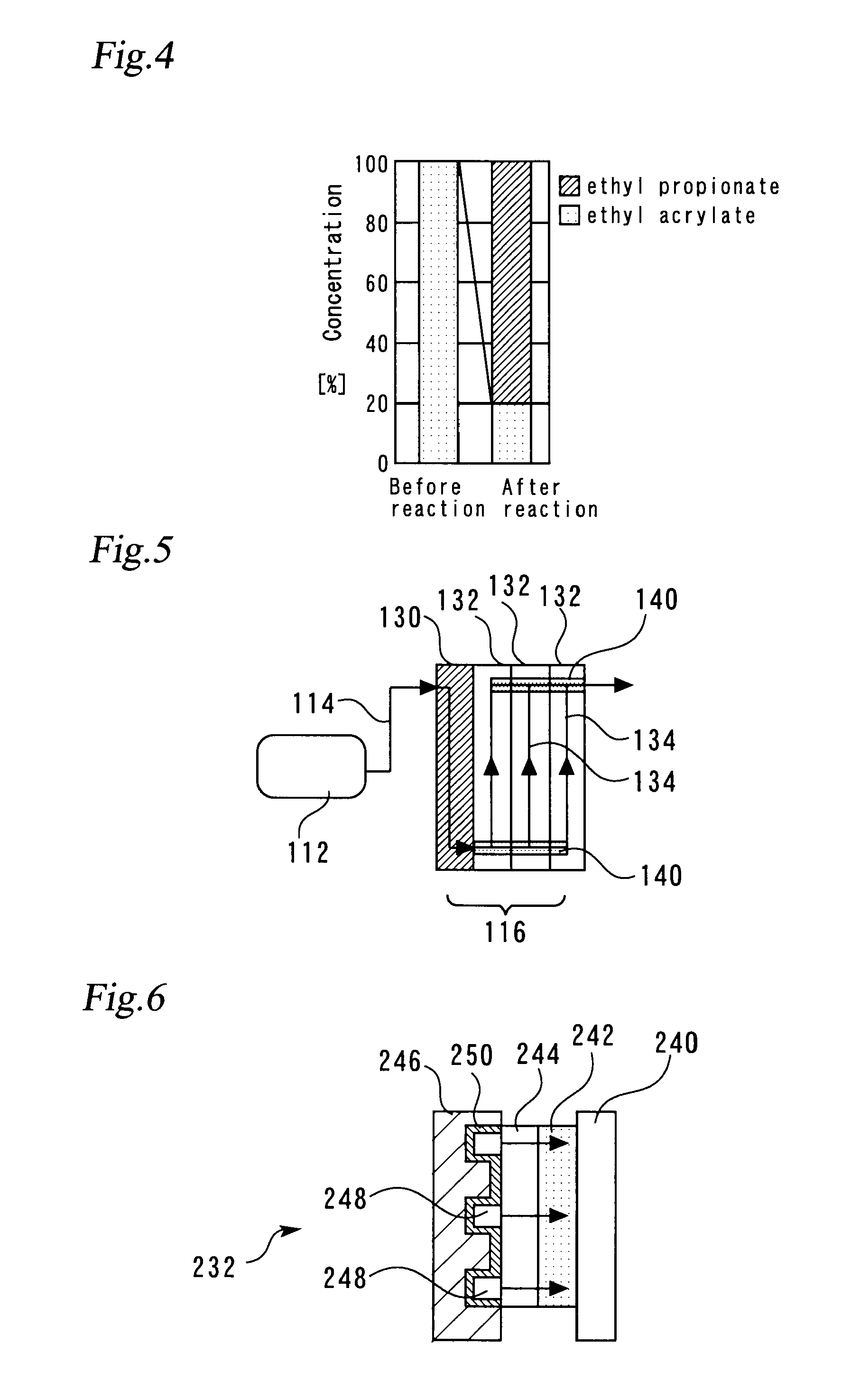Fuel cell system
a fuel cell and system technology, applied in the field of fuel cell systems, can solve the problems of reducing the responsiveness of the catalytic layer, and achieve the effects of reducing the poisoning effect of the odorant on the fuel cell anode catalyst, simple configuration, and enhanced hydrogen safety
- Summary
- Abstract
- Description
- Claims
- Application Information
AI Technical Summary
Benefits of technology
Problems solved by technology
Method used
Image
Examples
first embodiment
Modifications of First Embodiment
First Modification
[0095]In the first embodiment, ethyl acrylate is used as the nonsulfur odorant to be added to hydrogen. However, the present invention is not limited to this. As described earlier, the odorant poisons the catalyst because the π electrons in the odorant are readily adsorbed to the catalyst surface. The odorant's adsorbability to the catalyst can be decreased by hydrogenating the odorant. In this respect, the odorant applicable to the present invention is not limited to ethyl acrylate.
[0096]For example, an odorant containing various unsaturated hydrocarbon compounds, such as the odorant disclosed in JP-A-2004-134272, can be used with the present invention. A nonsulfur odorant is characterized in that it is less adsorptive than a sulfur odorant. In the system according to the present invention or other similar system in which a hydrogenated odorant flows into a fuel cell, therefore, it is preferred that a nonsulfur odorant be used.
second modification
[0097]The system assumed by a second modification is an anode-dead-end type fuel cell system, which supplies a fuel gas to the fuel cell 16 and generates electrical power while storing the fuel gas inside. However, the present invention is not limited to such a fuel cell system. The present invention can also be applied to a system that has a circulation line including a gas flow path for the anode side of the fuel cell, and circulates hydrogen in the circulation line.
third modification
[0098]The first embodiment is configured so that the hydrogenation device 14 incorporates the support 24, which supports the catalyst active sites 26 and is formed into folds. However, the present invention is not limited to this. For example, a honeycombed base material may be used to support the catalyst active sites. The honeycombed base material may be made of various materials such as metal, ceramic, or other nonconductive materials.
PUM
| Property | Measurement | Unit |
|---|---|---|
| temperature | aaaaa | aaaaa |
| temperature | aaaaa | aaaaa |
| temperature | aaaaa | aaaaa |
Abstract
Description
Claims
Application Information
 Login to View More
Login to View More - R&D
- Intellectual Property
- Life Sciences
- Materials
- Tech Scout
- Unparalleled Data Quality
- Higher Quality Content
- 60% Fewer Hallucinations
Browse by: Latest US Patents, China's latest patents, Technical Efficacy Thesaurus, Application Domain, Technology Topic, Popular Technical Reports.
© 2025 PatSnap. All rights reserved.Legal|Privacy policy|Modern Slavery Act Transparency Statement|Sitemap|About US| Contact US: help@patsnap.com



